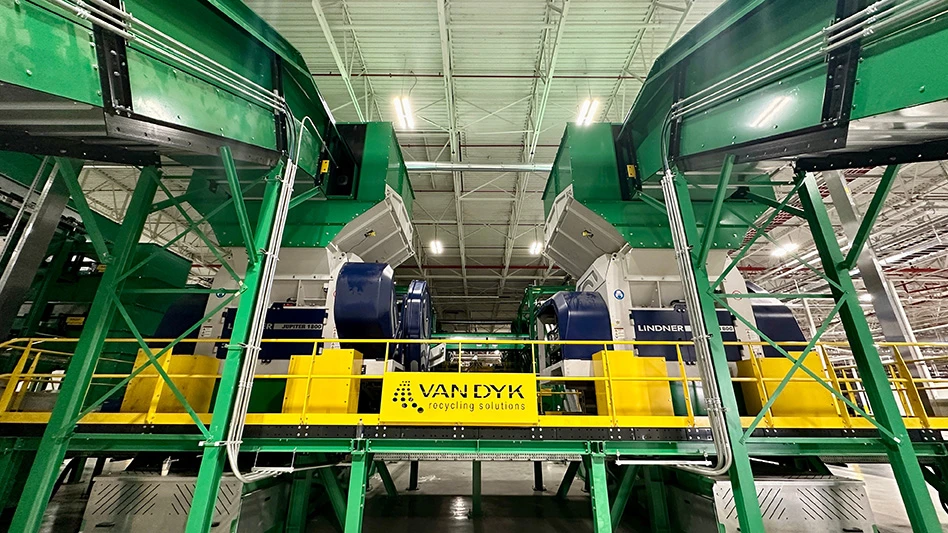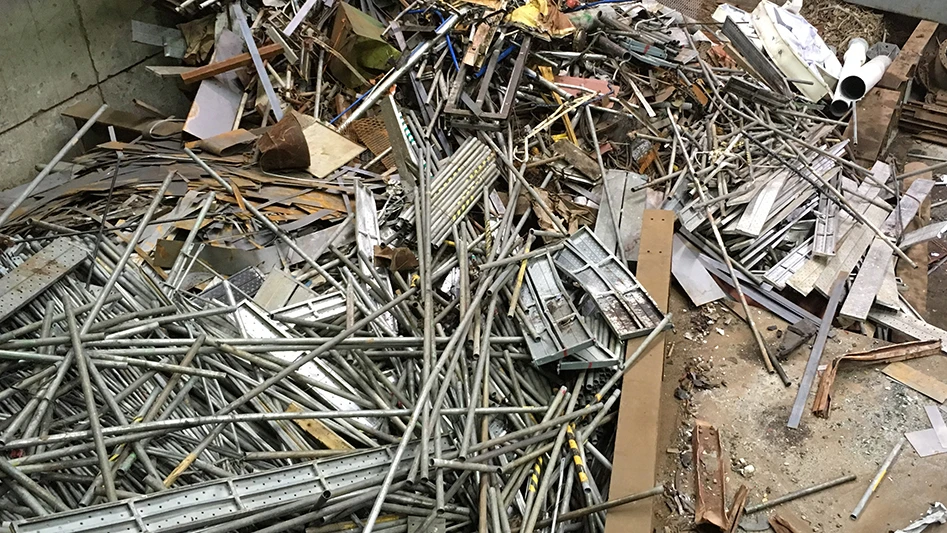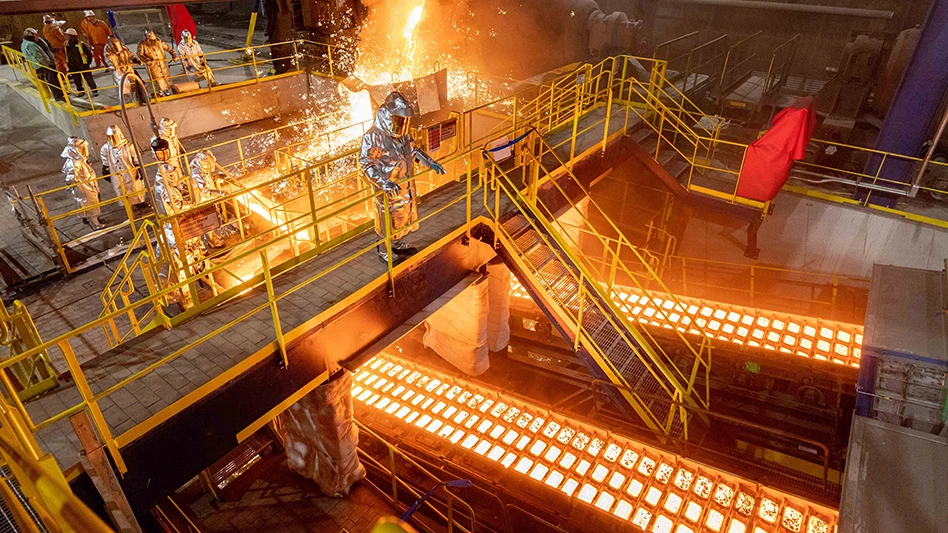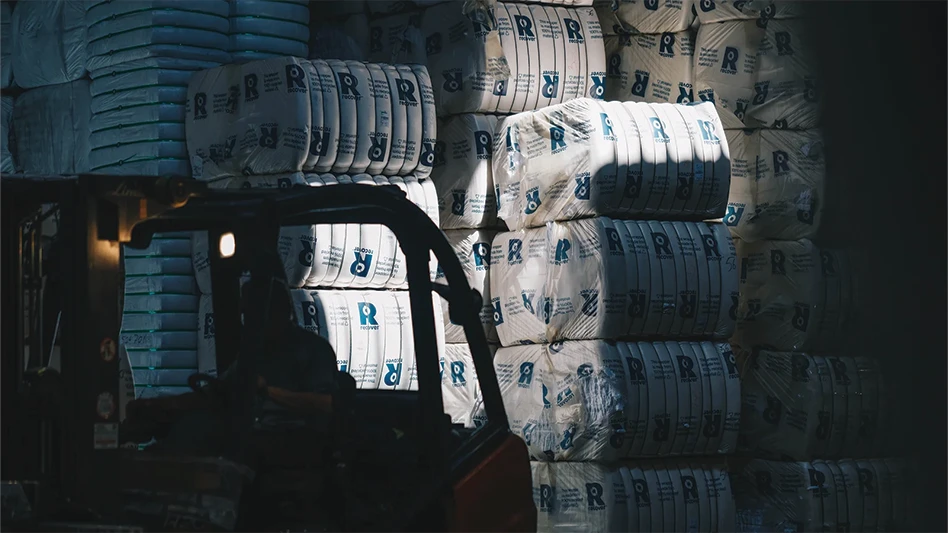
The World Steel Association (Worldsteel), the Brussels-based organization that represents steel producers that account for nearly 85 percent of global steel production, national and regional steel industry associations and steel research institutes, has revised its Short Range Outlook through 2021. Compared with the Short Range Outlook the association released in June of this year, the view is more optimistic.
Worldsteel forecasts that steel demand will contract by 2.4 percent to 1,725.1 million metric tons as a result of the COVID-19 pandemic. In 2021, the association says it expects steel demand to recover to 1,795.1 million metric tons, an increase of 4.1 percent relative to 2020.
In the June forecast, Worldsteel predicted that steel demand would contract by 6.4 percent, dropping to 1,654 million metric tons. At that time, the association says it expected steel demand to reach 1,717 million metric tons in 2021.
The association says a strong recovery in China will mitigate the reduction in global steel demand this year, while the post lockdown recovery in steel demand in the rest of the world has been stronger than was earlier expected. However, that reduction in demand still resulted in a deep contraction in 2020 in both developed and emerging economies, with only a partial recovery expected in 2021.
The forecast assumes that despite the current resurgence in COVID-19 infections in many parts of the world, nationwide lockdowns will not be repeated in favor of selective and targeted lockdowns, Worldsteel says.
“The global steel industry passed the lowest demand point for this year in April and has been recovering since mid-May,” Al Remeithi, chairman of the Worldsteel Economics Committee, says. “However, the recovery is uneven across countries depending on their success in containing the virus, the national industry structure and finally economic support measures.”
Remeithi adds that China’s rebound has been “surprisingly resilient,” which has led to Worldsteel revising its global growth forecast for 2020.
“In the rest of the world, we will see a sharp contraction of steel demand, both in developed and developing economies,” he says.
“This crisis has been particularly challenging for developing economies as they continue to struggle with the uncontrolled virus, low commodity prices and falls in exports and tourism. The pandemic has accelerated megatrends which have been slowly transforming both our and our customers’ industries, leading to a lasting impact far greater than short-term demand consequences,” Remeithi says.
Pent-up demand when lockdowns were lifted in May led to a rebound in some economic activity, suggesting a V-shaped recovery, Worldsteel says, adding that the rebound has been insufficient to offset the drop that occurred during the lockdowns. Many steel-using sectors remain below their pre-COVID-19 level, the association adds.
Given the ongoing pandemic, Worldsteel says “a W-shaped recovery cannot be ruled out and a full recovery in 2021 is unlikely.”
The outlook for China
China's recovery that began in late February suggests positive gross domestic product growth in 2020 despite a 6.8 percent contraction in the first quarter, the association says. Through August, investment in real estate was up 4.6 percent year over year, and infrastructure investment recovered to 2019’s level. In August, the mechanical machinery and automotive sectors showed year-over-year growth of 10.9 percent and 7.6 percent, respectively. As a result, mechanical machinery sector output through August surpassed that of 2019, gaining 1.2 percent, though automotive production remains 9 percent below that of 2019, Worldsteel says.
The association says China’s steel demand is expected to increase by 8 percent this year with the help of government infrastructure stimulus and a strong property market. In 2021, steel demand is expected to stay flat, supported by infrastructure and housing projects initiated in 2020. However, if the economy shows a full recovery, the government could reverse its stimulus policy to cool down the construction sector, according to Worldsteel.
The outlook for developed countries
In the U.S., the association says the recovery from the lockdown has been strong, aided by substantial government support measures. The manufacturing downturn was shorter and less acute than expected, but the country still struggles to control the virus' spread, and the recovery momentum might taper off in the coming months, Worldsteel says. Given these factors, the organization’s outlook for 2021 is less optimistic, with a subdued outlook for construction and auto production.
In Europe, the negative economic impact of COVID-19 was softened by strong social security schemes and fiscal stimulus. The post lockdown recovery in the EU is turning out to be stronger than expected, but the deep contraction of major steel-using sectors, especially automotive, will contribute to a double-digit contraction in 2020, the association says, citing pronounced contractions in Italy and Spain.
In Japan and South Korea, Worldsteel predicts a substantial contraction in steel demand this year and a limited recovery next year in light of falling exports and weak confidence.
Steel demand in the developed economies is expected to fall by 14.9 percent in 2020 and to increase by 7.9 percent in 2021, the organization predicts.
“The COVID-19 pandemic will exert a less severe impact on steel demand in the developed economies than the global financial crisis, bearing in mind that at the beginning of the pandemic, steel demand had not yet fully recovered from the [2008/2009] crisis,” Worldsteel says.
The outlook for emerging economies
Generally, emerging economies have been less well-equipped to absorb the shocks created by the pandemic, and the impact has been uneven. The association says it expects a double-digit fall in steel demand in 2020 for the major emerging economies.
India, which had one of the strictest lockdowns in the world, is expected to see the deepest decline in steel demand in decades. However, a relatively fast recovery should take place in 2021, supported by rural consumption and government investment in infrastructure, Worldsteel predicts.
In the Association of Southeast Asian Nations, or ASEAN, Vietnam will see positive growth in steel demand because of its successful containment of the virus, the association adds.
In 2021, the recovery of steel demand in the developing economies is expected to be less than full but faster than the developed economies, driven by infrastructure investment, Worldsteel says. Steel demand in the emerging economies, excluding China, is expected to fall by 12.3 percent in 2020 and to recover by 10.6 percent in 2021.
The outlook for steel-consuming sectors
A strong rebound in manufacturing will be counterbalanced by supply chain issues, Worldsteel says. However, steel consumers suffered less from the lockdown and are recovering faster than the hospitality, aviation and entertainment sectors.
Worldsteel says the construction sector has been more resilient as many governments focused on implementing public projects. Following the easing of lockdowns, this continued in the advanced economies, mostly driven by infrastructure investment, pent-up demand, low mortgage rates and easier access to credit.
However, the construction sector in many emerging economies, notably Turkey, Mexico and Brazil, will see double-digit contraction in 2020 as they enter a deep recession and face financing issues, Worldsteel predicts.
The association adds that recovery will be slow in 2021, with infrastructure driving construction growth in the coming years, especially in developing economies.
In the longer term, structural changes in the construction sector will take place, reflecting the shift in demand patterns for office and residential space and major changes in urban design and build regulations, Wordsteel predicts.
In April, automotive production fell by 70 percent to 90 percent in many countries. While supply-side issues dissipated relatively quickly, post-lockdown recovery has been constrained by a slow return in demand. Global automotive production was down by 34 percent year over year in the second quarter of the year. However, in China, domestic demand has helped the sector recover, but vehicle production is still below 2019 levels. In the rest of the world, the situation is much worse, Worldsteel says, pointing to car production in Germany and the U.S., which was down by more than 30 percent year over year through August. For the same comparison period, India’s passenger car production, which completely halted during the lockdown, is 46.1 percent below last year.
The machinery sector was severely hit by the disruptions of supply chains and declines in orders during the lockdown. China led the contraction in Q1 2020, and was followed by the E.U., the U.S. and Japan in Q2. Since May, the decline of machinery output decelerated, Worldsteel says, but the industry is still contracting in most countries as low profits and confidence are causing delays or cancellations of investment projects.
Latest from Recycling Today
- Cleveland-Cliffs adds board member
- Blizzard interrupts collection routes
- Biden officially blocks Nippon Steel’s acquisition of US Steel
- Highland Sanitation awarded solid waste and recycling contract in Wanamingo, Minnesota
- Ecobat gathers support for California permit renewal
- RecyclX platform designed to provide materials transparency
- Turkish mills sampled wide scrap market in 2024
- GLE Scrap Metal acquires interest in Mallin Cos.





